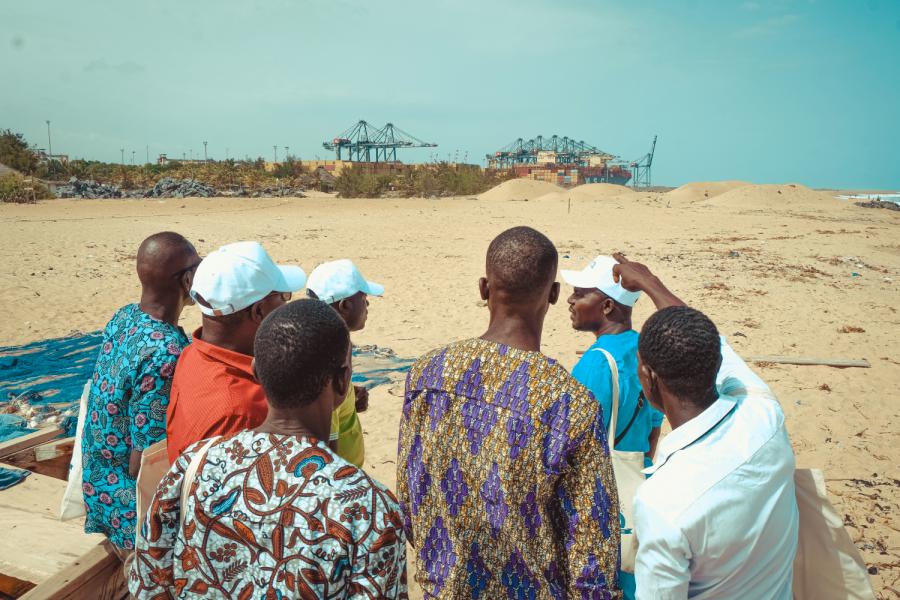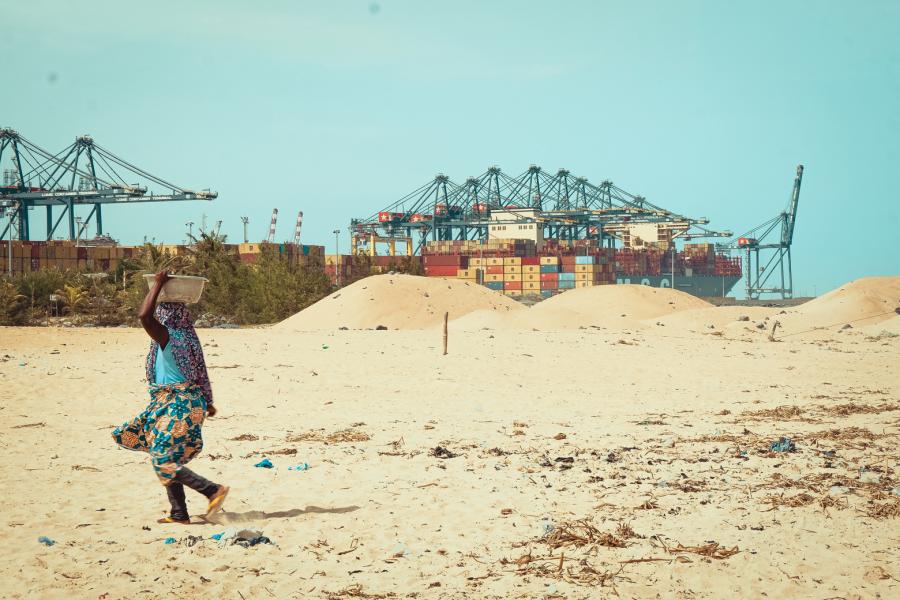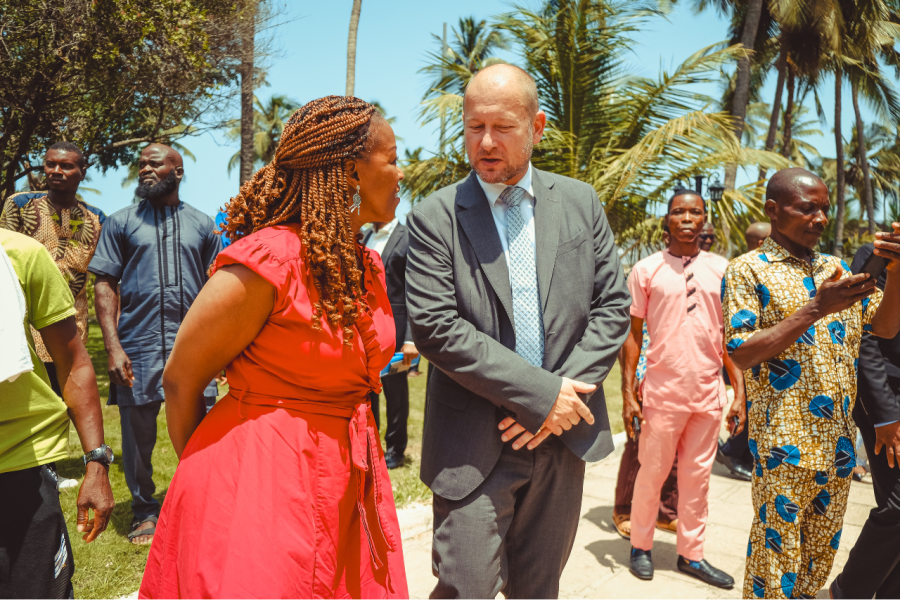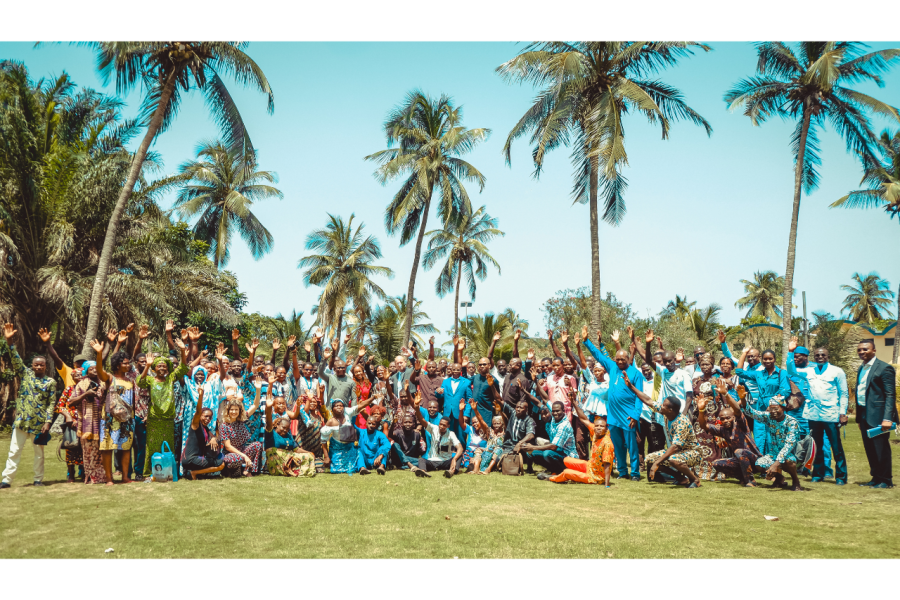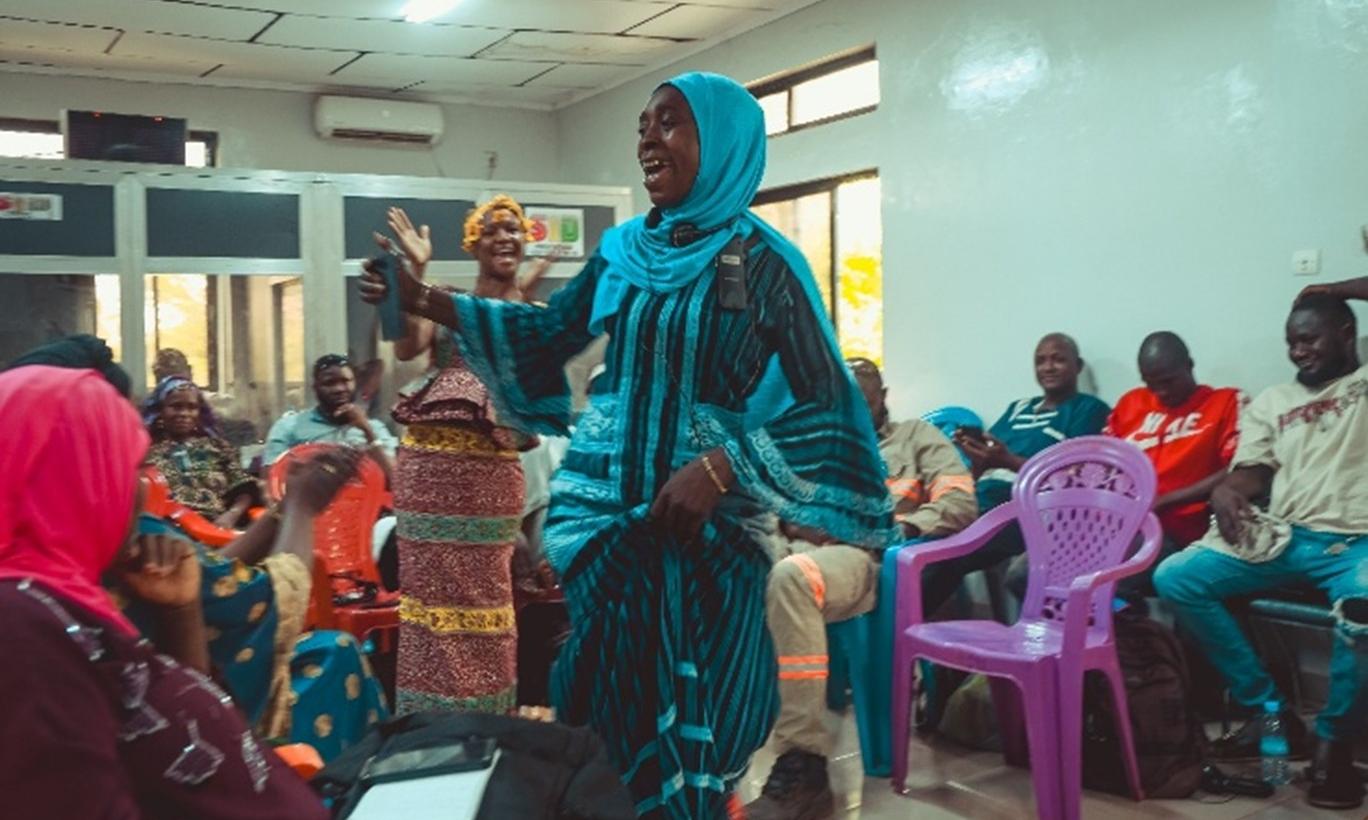Community-Company Dialogue Leads to Livelihood Restoration in Togo
The expansion of Togo’s maritime sector to develop the Lomé Container Terminal (LCT) – one of the largest container terminals in West Africa – aimed to drive economic growth both within Togo and across the region. Yet, operations of the IFC-supported project created hardships for many communities that had long lived and used the land allocated for the expansion.
After bringing their concerns to the CAO and engaging in a CAO-led dispute resolution process, the communities and LCT successfully turned conflict into mutual understanding. This process ultimately led to the restoration of livelihoods for those affected by the project—demonstrating that even the most complex disputes can reach common ground.
R. Mbock/CAO, 2025
On May 22, 2025, community members, LCT leadership, and Togolese government officials joined CAO at an event in Lomé to mark the conclusion of a seven-year dispute resolution process stemming from a 2018 complaint citing livelihood and land acquisition impacts related to LCT’s operations.
Learn more about the case.
For many, the occasion was also a time to reflect on what life was like before, during, and after the maritime expansion project.
Kodjo Abotsi, a veteran sand loader and truck driver at the Port of Lomé, shared how his life changed abruptly in December 2010, when he was informed he could no longer continue the job he had long relied on due to the construction of the new container terminal.
He was not alone. Hundreds of people lived and worked at the port, holding various income-generating roles—from gardeners and caterers to those involved in port operations and shipping activities. Suddenly, some were without homes, some without jobs, and all without a clear avenue for recourse.
Mr. Abotsi explained that he became aware of CAO through a local civil society organization, and along with over 400 community members, filed a complaint. The complainants and LCT agreed to participate in a CAO-led dispute resolution process.
Reaching consensus among parties in a dialogue is inherently challenging and is compounded when one of the parties includes hundreds of individuals.
For example, at the start of the dispute resolution process, it had come to CAO’s attention that one subset group of the complainants decided to pursue a judicial avenue related to their concerns and took LCT to court. In response, LCT communicated to CAO and the complainants that it no longer wished to pursue a mediation process with that particular complainant group but was committed to dialogue with the others.
Another turning point in the case came when LCT presented livelihood restoration options for consideration by the complainants. Discussions reached a standstill, as some complainants were open to the proposals while others were not.
In March 2023, 160 complainants – mainly those who worked as sand loaders and caterers at the port – decided to continue with the mediation, with other complainants exiting the mediation process and declining to pursue a CAO compliance process.
This case underscores the complexity of the mediation process and the often-tenuous nature of these discussions. What works for one may not work for another, and finding the middle-ground takes time and persistence.
Several months later, in October 2023, the remaining complainants and LCT reached a full and final mediation agreement on livelihood restoration, including distribution of food packs, one-year health insurance, and support for income-generating projects.
The agreement defined the criteria for livelihood restoration support, with approximately 90 complainants meeting the qualifications agreed upon by both LCT and the community.
CAO monitored the case until March 2025, when the complainants and LCT expressed satisfaction with implementation of the mediation agreement.
Read the Dispute Resolution Conclusion Report.
Speaking at the closing ceremony event, Ms. Essi Abeni, a complainant representative, shared, “Throughout this process, CAO was able to establish a neutral, inclusive and respectful framework for dialogue, allowing the different parties to express their concerns, assert their rights, and co-construct solutions adapted to the local reality.”
Implementation of the agreement and helping achieve remedy for those affected by a development project is only one element of CAO’s efforts. The case also resulted in the transformation of the relationship between the community and LCT, as they were left better equipped to work together, resolve issues, and create lasting benefits after CAO steps away – a sentiment that echoed throughout the closing ceremony.
CAO officially closed the case in July 2025.

